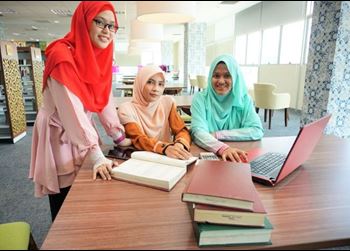
Dear Colleagues,
Greetings from Gurgaon! As we enter the second quarter of the year, I would like to share a high-level update on what is happening over here in India.
Besides a scorching summer, I believe the hottest in 72 years, there is a lot else happening in our market.
Starting on the school side, there has been strong growth in the application pipelines of our member and client schools, with some of the pent-up demand from 2020 playing out in the 2021 admission cycle given the reopening of schools and in-person classes getting back to normalcy after a two-year long hiatus. Our own assessments, the GMAT and NMAT, have also ended up playing a significant role towards this pipeline by contributing a higher number of candidates within the classroom as compared to previous years and possibly the highest ever average GMAT scores at 720 with member schools like the Indian School of Business.
On the placements side most schools have reported 100% placements with an average increase of between 15%-20% hike in salaries across sectors led by technology, consulting, finance, e-commerce and pharma sectors respectively. The positive bit is that these levels are higher than what they were when compared to pre-pandemic levels.
In terms of new trends, a vertical that has gained quick traction is the emergence of the Online Programs within the EdTech space. These programs offer shorter and much more economical options to candidates through either a fully virtual or hybrid mix of programs in a number of different subjects right from a Masters program to a PhD, customized as per the candidates requirements.
Moving on to the candidate side of things, the pent-up demand for study abroad has also played out in the last 15 months, thanks to the friendlier visa policies adopted by most countries. Upliftment of lockdown restrictions, as well as a changed perception of the United States (welcoming foreign students under the new political regime) have been some of the major reasons behind the surge.
We have also observed interesting changes in candidate score sending behaviour for Masters programs, with an emergence of new study destinations that have not traditionally been a part of the typical Indian consideration set. While the absolute numbers are small, new locations like Sweden, Ireland, Israel, and the Philippines, seem to have caught the fancy of Indian candidates. This signifies a new, though subtle, change in the mindset of Indian candidates who are otherwise known to stick to tried and tested locations like the UK, Germany, France, and Spain.
Having said that, the US remains a "top destination" for Indian candidates who still constitute the second largest group of international students in the US after those from China. Meanwhile, the United Kingdom is expected to be the fastest-growing destination for students till 2024 as it has re-introduced Post Study Work Visa programs and offers more intensive and economical one-year Masters programs compared to peers.
In terms of preferences, candidates are shortlisting schools/programs that offer higher ROI, scholarships, and degree outcomes/job opportunities with a clear preference for in-person study abroad experience.
On the digital side, the three most popular social media platforms amongst Indian candidates were Instagram, Twitter and YouTube. Voice based search is becoming quite popular as it provides more pointed results and mobile usage is increasing, with the average Indian user spending 4.8 hours daily on their mobile phones.
On the regulatory front, the Indian - Ministry of Education, has finally launched a long awaited ‘New Education Policy’ or NEP, that has an ambitious goal of paving the way for transformational reforms in class and better education systems within India. In terms of how this will affect GME in India, the ministry has granted an ‘Institute of Eminence’ (IOE) status to 20 select institutions (10 private and 10 public) who will receive several grants and aids from the government along with complete autonomy both administratively and academically, helping them enjoy better opportunities at a global level. This is a positive development not only for GME in India but also an opportunity for GMAC in the future as it can help in increasing our role as a supplier of quality candidates to the private institutions given their task of recruiting a significantly larger number of candidates.
And finally, to wrap up, here are some of the initiatives that the MD South Asia team has been working on to increase diversity by attracting more women to the candidate pipeline:

- Women Scholarships: The team created an exclusive PDF guide on women-only scholarships offered by European B-schools accepting the GMAT and promoted it extensively
- Women Influencer Videos: In this diversity building initiative all the female candidates were given access to the short video clips from the women exclusive webinars
- Geo targeted 72 women UG campuses across India as well as working women professionals
- Articles on mba.com and an all-women webinar